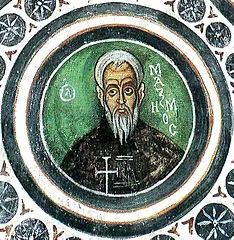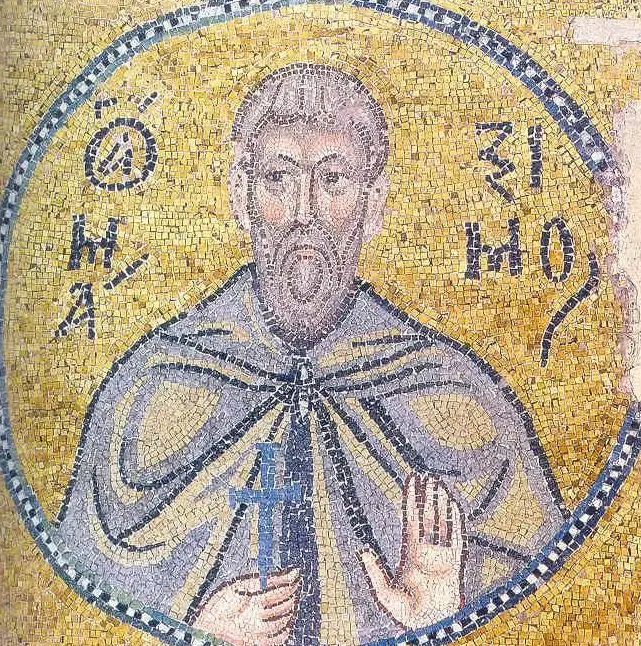 St Maximus the Confessor is one of the most significant Byzantine saints in the Orthodox Christian tradition. Within a comprehensive Christ-centred worldview St. Maximus engaged and clarified difficult sayings in the writings of St Gregory the Theologian, expanded upon the thought of St Gregory of Nyssa, and wrote extensively on the nature of the Church, asceticism, and self-sacrificial love in Christ and the life of holiness.
St Maximus the Confessor is one of the most significant Byzantine saints in the Orthodox Christian tradition. Within a comprehensive Christ-centred worldview St. Maximus engaged and clarified difficult sayings in the writings of St Gregory the Theologian, expanded upon the thought of St Gregory of Nyssa, and wrote extensively on the nature of the Church, asceticism, and self-sacrificial love in Christ and the life of holiness.
St Maximus The Confessor: Interpreter of Tradition
Saint Maximus the Confessor was born in Constantinople around 580 and raised in a pious Christian family. He received an excellent education, studying philosophy, grammar, and rhetoric. He was well-read in the authors of antiquity and he also mastered philosophy and theology. When Saint Maximus entered into government service, he became first secretary (asekretis) and chief counselor to the emperor Heraclius (611-641), who was impressed by his knowledge and virtuous life.
Saint Maximus soon realized that the emperor and many others had been corrupted by the Monothelite heresy, which was spreading rapidly through the East. He resigned from his duties at court, and went to the Chrysopolis monastery (at Skutari on the opposite shore of the Bosphorus), where he received monastic tonsure. Because of his humility and wisdom, he soon won the love of the brethren and was chosen igumen of the monastery after a few years. Even in this position, he remained a simple monk.
In 638, the emperor Heraclius and Patriarch Sergius tried to minimize the importance of differences in belief, and they issued an edict, the “Ekthesis” (“Ekthesis tes pisteos” or “Exposition of Faith),” which decreed that everyone must accept the teaching of one will in the two natures of the Saviour. In defending Orthodoxy against the “Ekthesis,” Saint Maximus spoke to people in various occupations and positions, and these conversations were successful. Not only the clergy and the bishops, but also the people and the secular officials felt some sort of invisible attraction to him, as we read in his Life.
When Saint Maximus saw what turmoil this heresy caused in Constantinople and in the East, he decided to leave his monastery and seek refuge in the West, where Monothelitism had been completely rejected. On the way, he visited the bishops of Africa, strengthening them in Orthodoxy, and encouraging them not to be deceived by the cunning arguments of the heretics.
Saint Maximus travelled from Alexandria to Crete, where he began his preaching activity. He clashed there with a bishop, who adhered to the heretical opinions of Severus and Nestorius. The saint spent six years in Alexandria and the surrounding area.
In the year 647 Saint Maximus returned to Africa. There, at a council of bishops Monotheletism was condemned as a heresy. In 648, a new edict was issued, commissioned by the Emperor Constans and compiled by Patriarch Paul of Constantinople: the “Typos” (“Typos tes pisteos” or “Pattern of the Faith”), which forbade any further disputes about one will or two wills in the Lord Jesus Christ. Saint Maximus then asked Saint Martin the Confessor (April 14), the successor of Pope Theodore, to examine the question of Monothelitism at a Church Council. The Lateran Council was convened in October of 649. One hundred and fifty Western bishops and thirty-seven representatives from the Orthodox East were present, among them Saint Maximus the Confessor. The Council condemned Monothelitism, and the Typos.
When Constans II received the decisions of the Council, he gave orders to arrest both Pope Martin and Saint Maximus. The emperor’s order was fulfilled only in the year 654. Saint Maximus was accused of treason and locked up in prison. In 656 he was sent to Thrace, and was later brought back to a Constantinople prison.
The saint and two of his disciples were subjected to the cruellest torments. Each one’s tongue was cut out, and his right hand was cut off. Then they were exiled to Skemarum in Scythia, enduring many sufferings and difficulties on the journey.
After three years, the Lord revealed to Saint Maximus the time of his death (August 13, 662). Three candles appeared over the grave of Saint Maximus and burned miraculously. This was a sign that Saint Maximus was a beacon of Orthodoxy during his lifetime, and continues to shine forth as an example of virtue for all. Many healings occurred at his tomb.
Saint Maximus has left to the Church a great theological legacy. His exegetical works contain explanations of difficult passages of Holy Scripture, and include a Commentary on the Lord’s Prayer and on Psalm 59, various “scholia” or “marginalia” (commentaries written in the margin of manuscripts), on treatises of the Hieromartyr Dionysius the Areopagite and Saint Gregory the Theologian. Among the exegetical works of Saint Maximus are his explanation of divine services, entitled “Mystagogia” (“Introduction Concerning the Mystery”).
St Maximus left many writings (some of which are collected in the Philokalia) that are still widely read today; some are doctrinal, but many more describe the contemplative life and offer spiritual advice. He also wrote widely on liturgical and exegetical subjects. His theological work was later continued by St. Symeon the New Theologian and by St. Gregory Palamas.
His writings include:
- Quaestiones ad Thalassium – 65 questions and answers on difficult passages of Holy Scripture
- Ambigua – an exegetical work on St. Gregory the Theologian
- Paraphrases of the works of Dionysius the Areopagite (though many of the works that have come down under Maximus’ name are now held to be the work of John of Scythopolis, who wrote in the first half of the 6th century, some 100 years before Maximus)
- Several dogmatic treatises against the Monothelites
- Liber Asceticus
- Capita de Caritate
- Mystagogia-a mystical interpretation of the Divine Liturgy

Source
Image Credit: Wikimedia Commons / Chatzidakis. Byzantine Art in Greece, Wikmimedia Commons / Maximus the Confessor (mosaic in Nea Moni)
![]()

